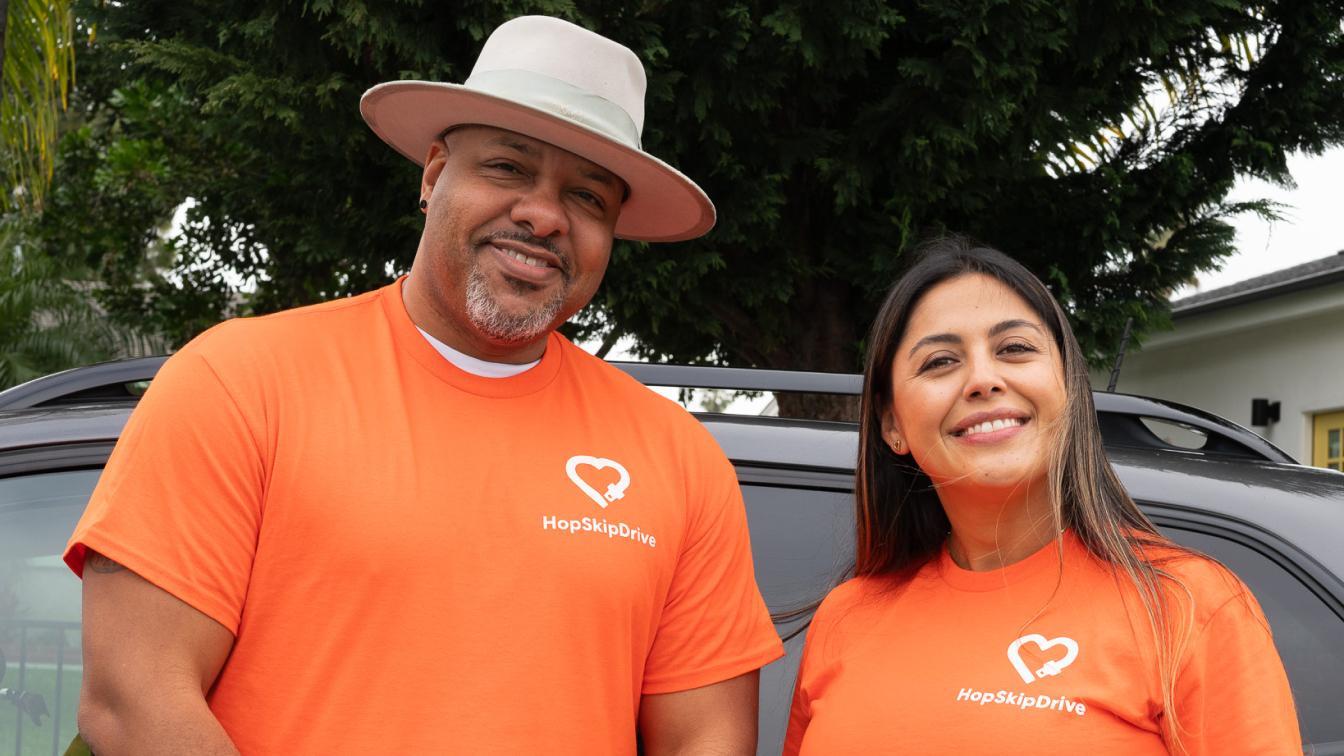How HopSkipDrive will use $37M in funding to modernize school transportation

Today, we announced that we raised $37M in Series D funding from Energy Impact Partners, Keyframe Capital, FirstMark Capital, Alumni Ventures, Transform Capital, Upfront Ventures, Gingerbread, 1843, Artemis Fund, 1776, Halogen Ventures, Cap Table Coalition and others who believe in our mission.This capital enables us to help even more kids, families and schools as we pursue our mission of creating opportunity for all through mobility.
When we first started HopSkipDrive in 2014, we set out to solve a problem many parents shared — how to safely get their kids where they need to go every day. Eight years later, we are solving an even larger problem: the current state of school transportation.
School transportation is a critical component of our school infrastructure, designed to ensure equitable access to education. But today, it’s not working. The system is inefficient, outdated and expensive, and its shortcomings are causing huge inequities in educational access that are affecting the welfare of millions of kids each day.
This funding fuels our path towards achieving our vision of a modern student transportation system, allowing us to further build out our RideIQ platform, expand to new markets and bring more districts into the future of transportation.
The current problem
School bus driver shortages are a crisis across the country, with 88% of districts affected by this issue. Districts are having trouble recruiting new bus drivers, as CDL drivers flock to the higher pay and better hours of private industry. Many drivers retired due to Covid, and schools are struggling to fill those roles. Districts have offered hiring bonuses of up to $5,000 and increased bus driver salaries, yet they still can’t find enough drivers.
There are huge consequences to the shortage, including expanded walk boundaries (with children as young as six expected to walk along dangerous busy streets on the way to school), eliminated bus routes and buses not showing up and leaving kids stranded. Students are being subjected to consolidated routes, resulting in longer bus rides, revised school start times ranging from 7 to 10 a.m. and buses showing up late, causing students to miss classes.
But the answer isn’t more bus drivers — it’s overhauling the entire system.
HopSkipDrive eliminates inefficiencies
While school districts spend $28B annually on school transportation, less than 30% of students ride the bus. Most districts route buses based on student transportation eligibility, not on actual ridership. Many districts don’t collect ridership data, so they are planning for riders that may never ride the bus. In fact, 54% of students take a personal vehicle to school.
Using the bus as a one-size-fits-all model creates serious inefficiencies: some routes are overcrowded, creating significant safety issues, while other routes transport only three kids on a 70-passenger school bus. This isn’t a bus driver shortage problem; it’s a utilization problem.
HopSkipDrive solves for bus driver shortages by solving the utilization problem.
First, our platform introduces a new, dynamic supply of drivers. HopSkipDrive CareDrivers are not CDL drivers; they are community members with caregiving experience who drive smaller vehicles. HopSkipDrive does not replace the yellow bus — it complements the yellow bus, filling in where bus routes are inefficient or where students with special circumstances need individualized transportation.
HopSkipDrive’s network of thousands of CareDrivers can be flexed up or down to match actual need, so districts don’t have to expend resources on seats that remain empty. With HopSkipDrive, districts pay only for the rides they use rather than letting a fleet sit empty.
Second, our RideIQ software recommends the right vehicle for each route (and each stop), whether that’s a bus, an SUV or a sedan. Districts can then match rides to actual ridership.
With RideIQ, districts realize they don’t need as many buses and drivers as they think they do — which means they don’t have a driver shortage and are able to do far more with the resources they currently have. By optimizing transportation plans, districts can reduce the need for route consolidation, additional bell times and increased walk boundaries. In some cases, they are even able to offer increased transportation services.
HopSkipDrive’s optimization and supplementation save districts money and can be up to 40% more affordable than an underutilized bus.
HopSkipDrive enables equity and opportunity
Low-income families overwhelmingly depend on the school bus: 70% of children from low-income families take the bus to school. This means school bus driver shortages and transportation inefficiencies further widen equity gaps. Long commute times are just one devastating consequence of this: They disproportionately affect Black students, with some students spending upwards of four hours on the bus each day!
This matters. Long commute times lead to increased tardiness and chronic absenteeism, and affect a student’s ability to participate in before- or after-school activities. Being on the road for hours also causes stress, which can lead to lower academic performance as well as behavioral issues.
HopSkipDrive decreases commute times by getting students to school with shorter rides, reducing tardiness, absenteeism and stress. In Los Angeles, HopSkipDrive helps cut commute times by more than 50% — giving students back an hour a day.
School choice has been touted as a solution to educational inequity, but can choice really be possible if parents can’t get their kids to their school of choice? Lack of transportation is a common barrier, particularly for low-income and minority parents. In one study, 27% of parents — and one-third of those with the lowest incomes — reported that they didn’t send their child to a more preferred school because of transportation challenges.
School buses inherently don’t make sense with school choice: Students come from many different areas, and it’s hard to create efficient routes. With HopSkipDrive, small-vehicle solutions and more efficiently mapped routes makes transportation to choice schools more equitable, and makes choice more of an actual choice for all.
Children experiencing homelessness or in the foster care system also benefit from HopSkipDrive’s flexible, dynamic driver supply. These populations are highly mobile and move housing situations frequently; thankfully they have federally mandated rights to receive transportation to their school of origin. If a student in foster care moves to a new home placement at 10:30 at night, the school district can’t route a bus specifically for that student overnight — but a HopSkipDrive ride can ensure that child gets to their school the next morning.
HopSkipDrive improves safety
School buses have long been held up as the paragon of safety, but much like school transportation itself, the actual definition of safety hasn’t evolved. School buses still often don’t have seatbelts, GPS tracking, collision detection, or reporting or accountability for bus drivers. There’s also a complete lack of visibility — parents often don’t know where their child is at any given time, which is something we overwhelmingly hear is their main safety concern. In addition, the school bus is one of the top locations for bullying.
HopSkipDrive continually innovates on safety, proactively and strategically implementing new technology and processes. We don’t believe that rote compliance to regulations designed specifically for the yellow bus, not small vehicles, is the best means to ensure safety. We believe safety is about looking to the future and being proactive, innovative and relentless.
HopSkipDrive CareDrivers must pass a 15-point certification process before they can access the platform. Through GPS monitoring, HopSkipDrive tracks all rides live and offers full real-time visibility to parents and districts at each stage of the ride. Districts and caregivers can easily contact each other or our Safe Ride Support team at any point.
Mobile telematics record any events of risky driving behavior so that CareDrivers can continually improve on their safe driving, while detailed profile notes ensure CareDrivers know exactly what each Rider needs — whether it’s to be dropped off with an adult or other special measures.
We also publish an annual Safety Report, and are the first (and only) organization in student transportation to do so. We believe in holding ourselves — and the industry — accountable through transparency.
HopSkipDrive is better for the environment
School transportation is not sustainable, especially considering the inefficiencies in current capacity utilization. A diesel bus filled with students may balance environmental impact with efficiency, but a mostly empty diesel bus is inefficient and harmful to the environment. The electrification of current bus fleets is incredibly expensive and will take years.
HopSkipDrive reduces school transportation’s carbon footprint by replacing underutilized bus routes with small-vehicle solutions. By reducing overall fleet size, districts can accelerate their fleet electrification, while using cleaner small-vehicle options to fill in for inefficient bus routes.
In addition, the HopSkipDrive CareDriver network is 4x cleaner than diesel buses. 20% of overall CareDriver vehicles (40% in our Seattle market) are hybrid or EV.
Creating opportunity for all through mobility
HopSkipDrive believes in building for equity, opportunity, efficiency, safety and community — and modernizing the school transportation system is how we plan to do just that.
From relieving the stress of long commute times to reducing environmental impact, HopSkipDrive is the solution. We thank our investors for their contribution to creating a brighter future for kids everywhere.



